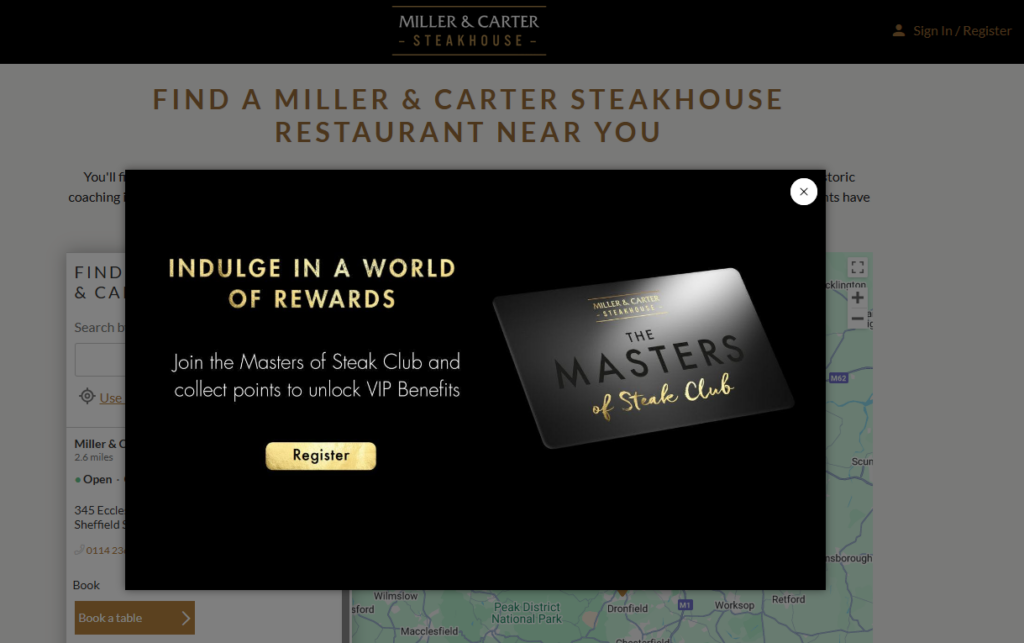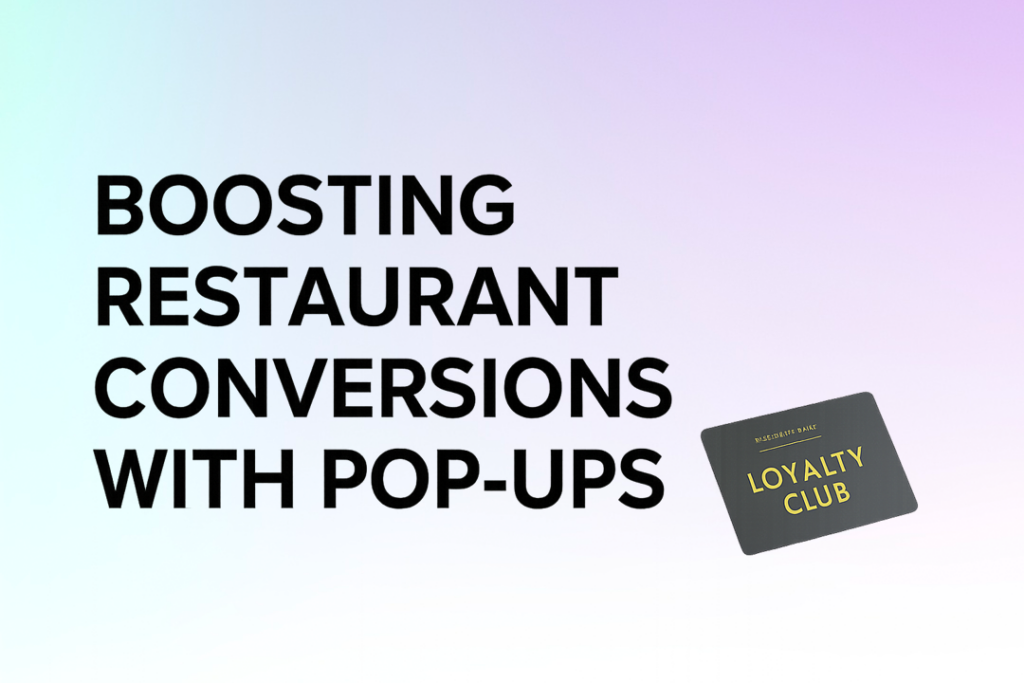Pop-ups on websites can be a highly effective way to capture attention, drive a desired action and boost results. For many, your website is the place that gets the most eye-balls and therefore provides the biggest opportunity to ‘move the needle’. However, if not implemented correctly they come with their own set of drawbacks and challenges.
During the first 3 months of the year, at Guestwise we have powered over 7 million pop-ups, so here’s our take on the pros, the cons and our top tips, along with a few juicy stats along the way.

Miller & Carter Pop Up
Pros of Using Pop-ups for Restaurant Websites
Increased Conversions: The biggest pro by far is the fact that simply put, they increase conversions and therefore revenue. Whether this is getting marketing consent, driving bookings, capturing third party data, buying gift vouchers or anything in-between. At a time when every pound counts, pop-ups should absolutely play a part in your overall strategy.
Increased Engagement and Data Collection: Pop-ups can help restaurant operators grow their customer database efficiently. By offering exclusive incentives like rewards, loyalty club memberships, or special event invites, you can actively encourage web visitors to willingly share their marketing information. With direct integrations into the leading hospitality CRM’s like Airship and Acteol, data can also be seamlessly passed into your database, without the need to send them off to another form.
Immediate Attention: Pop-ups instantly draw a visitor’s attention, making them highly effective for highlighting specials, events, or limited-time promotions. They ensure your important messages don’t get lost among other web content and can easily be turned on, off or only shown to the right people at the right time.
Those 7m pop-ups we powered converted at 6.4% delivering nearly 320,000 additional incremental conversions compared to people in a control group who did not see a pop-up.
Cons of Using Pop-ups for Restaurant Websites
Lack of Personalisation: In most instances, pop-ups on restaurant websites show everyone the same message, in the same place, at the same time. They tell everyone to ‘Join the Loyalty Club’ even if you’re already a member or the message offers no real value, for example ‘Book Now for Easter’.
User Experience Interruption: The biggest downside of pop-ups is their potential to annoy customers. Poorly timed or excessively intrusive pop-ups can negatively affect user experience, leading visitors to quickly exit the site. There’s nothing much more annoying online than a pop-up blocking what you’re trying to do.
Negative Impact on SEO and Loading Speed: Pop-ups, if improperly implemented, can slow website load speeds and negatively affect SEO rankings. From time to time, Google penalises sites with intrusive mobile pop-ups, potentially reducing visibility.
Guestwise Top Tips for boosting your Pop-up powers
Tip 1: Prioritise Personalisation
As Guestwise is plugged-in to your existing CRM we only show relevant pop-ups to relevant guests. If we know you’re already a loyalty member, we don’t ask you to sign up. If we know you’re a loyalty member but we don’t have your date of birth, we will ask just for that bit of information. Stop blasting everyone with the same message and treating everyone the same.
Tip 2: Track Everything
If you are currently using pop-ups but have no way of tracking their performance, or ideally comparing with control groups, you have no idea the value they are bringing or whether they are working at all. Every pop-up should be able to track against a specific goal, whether that’s a sign up, a booking or data capture. Every pop-up in Guestwise can be tracked end to end showing the impressions, interactions, conversions, conversion rate %, the incrementality vs a control group (who saw no pop-up) and most importantly the incremental revenue generated.
Tip 3: Focus Where the Traffic Is
There are some pages you probably don’t want to show a pop-up on – for example if someone is half way through making a booking, so you want to focus on showing pop-ups on the pages that have the most amount of traffic and then make the pop-ups for those pages specific and relevant. You may think your Home page is the ‘busiest’ page on your website, but with most people coming through to a location specific page, it can often only attribute between 5% and 10% of overall web traffic.
Tip 4: Take Advantage of ‘Dead Pages’
There are certain pages on your website which can be classed as ‘Dead Pages’. A perfect example of this is the post booking confirmation page. Normally this page shows a summary of your booking and is the page guests exit your website on. By being able to track people through the booking journey to see if they have opted-in to marketing or not as part of that flow, means we have an opportunity to show a ‘marketing consent’ pop-up on the booking completion page, only to people we know are not opted-in to marketing. Typically these pop-ups convert at around 20%, meaning you can make a lot of money out of these ‘Dead Pages’.
Conclusion: Balance is Key
When thoughtfully designed and carefully timed, pop-ups can enhance customer experience, drive valuable interactions, and increase restaurant revenue. However, the key is balance—using pop-ups sparingly and strategically ensures they enrich rather than frustrate the customer journey.
If you’d like to see the power of running your pop-ups with Guestwise with direct CRM integrations and end to end conversion tracking drop us an email on [email protected]

